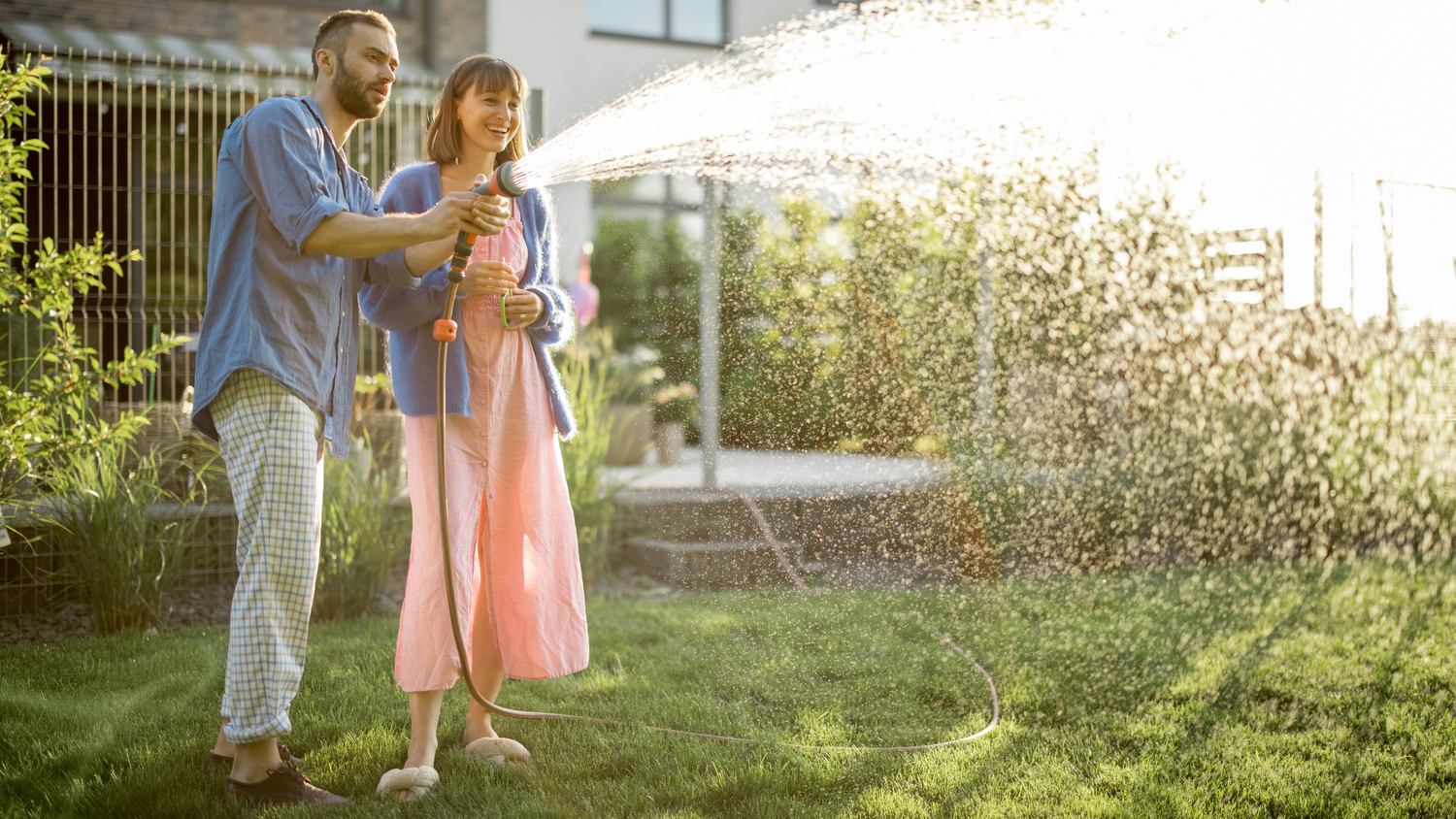Creating a lush, vibrant lawn is a goal for many homeowners, but achieving that perfect patch of green isn't just about mowing and fertilizing—it hinges significantly on how much you water your lawn. The key to a healthy lawn isn't just about how much water you use but understanding how long to water each time. Finding this balance is crucial, as over-watering can lead to fungal diseases, and under-watering can stress the grass. This comprehensive guide will delve into the art and science of watering your lawn, helping you unlock the secrets to a thriving and resilient yard.
Understanding Your Lawn's Needs
Before discussing timing, it's essential to understand that each lawn is unique. Many factors influence your lawn's water requirements, such as grass type, soil conditions, climate, and seasonality. For instance, cool-season grasses like Kentucky Bluegrass and Fescue require different watering strategies than warm-season varieties like Bermuda and Zoysia.
The Role of Soil in Watering
Soil type is pivotal in water retention and drainage. Loamy soil, which is considered ideal, holds moisture well and drains adequately. Sandy soil drains quickly, necessitating more frequent watering, whereas clay soil retains water, increasing the risk of overwatering. Understanding your soil type will guide you in adjusting your watering schedule effectively.
Measuring Water for Your Lawn
An often-asked question is, "How much water does my lawn need?" The general guideline is that lawns require about 1 to 1.5 inches of water per week, either from rainfall or manual watering. Place a few empty tuna cans or similar containers around your lawn to measure the amount of water it receives. After watering, use a ruler to check the water depth in these cans to ensure your lawn gets the right amount.
Deciphering the Best Watering Duration
Arriving at the ideal watering duration involves a dance with factors like sprinkler output, climate conditions, and the specific needs of your lawn. Here are steps to tailor the perfect watering schedule:
1. Know Your Sprinkler Output: Sprinkler systems vary in water discharge rates. Conduct a simple test by placing containers around your lawn and running the sprinkler for 15 minutes. Measure the water in the containers to estimate how long it will take to achieve the desired 1 to 1.5 inches of water.
2. The Early Bird Waters the Lawn: The best time to water your lawn is in the early morning, between 4 a.m. and 6 a.m. when temperatures are more relaxed and winds are calmer. This timing helps reduce evaporation and ensures water soaks deeply into the soil, reaching the grass roots.
3. Watch the Weather: Adjust your watering schedule for rainfall and temperatures. After heavy rain, you can skip your next watering, and lawns require less water during cooler seasons. Proactive adjustments help conserve water and keep your lawn healthy.
4. Divide and Conquer with Cycle and Soak: The "cycle and soak" method works wonders in preventing runoff and ensuring water penetrates deeply for sloped or compacted areas—water in short bursts over several cycles, giving time for the water to soak in between.
Tailoring Watering Practices by Season
Spring: Starting a consistent watering routine is crucial as your lawn begins to wake from dormancy. Focus on the recommended amount of water, but remember to adjust based on your area's precipitation.
Summer: This season demands vigilance in watering. High temperatures and increased evaporation can stress your lawn. Keep consistent with the 1 to 1.5 inches rule, but be prepared to water more frequently during heat waves.
Fall: Decreased temperatures and increased rainfall might reduce the need for manual watering. Adjust accordingly, ensuring your lawn is prepared to enter winter in a strong and healthy state.
Winter: In most climates, lawns enter dormancy, and watering needs significantly decrease. However, in warmer climates where grass continues to grow, maintain a reduced watering schedule based on the lawn's needs, considering reduced evaporation rates and potential rainfall.
Overwatering vs. Underwatering: Pitfalls to Avoid
Overwatering: Too much water can lead to shallow root systems, making your lawn less drought-tolerant. It can also encourage the growth of fungi and other lawn diseases. The consequences of over-watering are detrimental to your lawn and wasteful of precious resources.
Underwatering: Insufficient water causes grass to enter a state of stress, leading to brown, dry, and brittle grass. Extended periods of drought stress can compromise your lawn's ability to recover, making it susceptible to weeds and diseases.
Signs of a Well-Watered Lawn
A well-watered lawn exhibits deep green color, vigorous growth, and resilience. It efficiently recovers from foot traffic, with blades quickly returning to an upright position. A healthy lawn also has a deep root system, better equipped to withstand drought and resist pests and diseases.
Leveraging Technology for Efficient Watering
Incorporating technology, such as intelligent sprinklers and moisture sensors, can significantly enhance your lawn's water efficiency. These devices automate the watering process, adjusting the schedule based on real-time weather conditions and soil moisture levels, ensuring your lawn receives the right amount of water at the right time.
Final Thoughts: A Balancing Act
Mastering the art of lawn watering is a balancing act that blends science with a touch of intuition. Understanding your lawn's unique needs and adjusting your practices according to seasonal changes and weather patterns allows you to establish a watering schedule that promotes a lush, resilient, and healthy lawn. Remember, the goal is not just to water your lawn but to nurture it, ensuring it thrives through the seasons. By embracing these principles and techniques, you're not just watering grass—you're cultivating an oasis of green that enhances your home and the environment.






Leave a comment
This site is protected by hCaptcha and the hCaptcha Privacy Policy and Terms of Service apply.